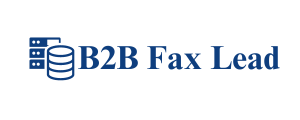In today’s competitive translation industry, adopting Linguistic Quality Assurance (LQA) strategies is essential for professionals aiming to deliver disc information technologies top-notch services. We view translation as an art that requires understanding and conveying disc information technologies messages in a way that faithfully reflects their original meaning, style, and cultural context. Therefore, translator evaluation, translation testing, and linguistic quality assurance are crucial components for achieving translation excellence.
What is Linguistic Quality Assurance disc information
(Quality Assurance) or LQA (Linguistic Quality Assurance) is one of the most crucial processes in translation, particularly in transcreation and localization. Despite its importance, LQA often does not receive the attention it truly deserves.
This process goes beyond merely reviewing or correcting the translated text; it also involves assessing the translation’s suitability for its intended bc data europe purpose and the target context in which it will be used. In such cases, we refer to Language Quality Inspection (LQI) or Language Quality Evaluation (LQE).
While this control may seem like a tedious part of the translation process once it is finished, it is – or should be – a fundamental and inherent aspect of any translation task.
Linguistic quality control
ensures that localization or transcreation work is perfectly adapted to the culture and context in which it will be used. This involves a thorough review and adjustment process that assesses both linguistic accuracy and cultural and contextual appropriateness. Careful consideration is given to how expressions, references, and linguistic nuances will be perceived by the target audience. Additionally, content is reviewed to ensure alignment with local norms, values, and sensitivities.
This process may also
include examining visual and formatting elements to confirm that the design, layout, and presentation of the text are appropriate and effective within the new cultural environment. For example, when localizing a website or application, date formats, currency, and other units of measurement should be adjusted. It is also important to ensure that images and colors are culturally appropriate. It is also crucial to ensure that all parts of the content interact correctly and that there are no technical errors that could affect the user experience.
Addressing these details
with proper LQA in internationalization processes not only enhances the target audience’s understanding of the message but also increases its impact and emotional connection with the audience. And, speaking of an audience, what happens when we have one in front of us?
Here are some tips for translating technical documentation and interpreting in specific fields without losing your sanity.
Delivering high-quality written technical translations already presents challenges due to the complexity and specificity of the language used. Adding the stress of live oral translation or interpreting completes the challenge.
Let’s start with written technical translation, such as the Importance of vontinuous Iteration pharmaceutical documentation, where accuracy is paramount, as any error can have serious consequences. In such cases, it is essential to:
Understand specialized disc information technologies
terminology and stay up to date with changes in the industry.
Use translation memories, dictionaries, and technical glossaries specialized in the field to ensure consistency and accuracy in terminology.
Consult subject matter experts if any doubts arise about terms or concepts to avoid errors.
Adhere to international regulations and standards, such as Good Documentation Practices (GDP) and Food and Drug Administration (FDA) standards, among others.
Conduct a thorough LQA to verify all of the above, and to ensure the text flows well and is free of grammatical or spelling errors.
And what about technical disc information technologies
interpreting? Whether it’s in the america email list pharmaceutical, medical, textile manufacturing, or international fisheries sectors, technical interpreting shares the same requirements as written translation in terms of specialized knowledge – not only of the language but also of the technical field. The added challenge lies in real-time oral comprehension and expression, with little to no opportunity for live, on-the-spot LQA. In these cases, professionals must:
Study the specific subject matter prior to an interpretation and familiarize themselves with the relevant terminology.
Work closely with speakers to ensure a smooth integration of the entire communicative process.
Ask for clarification if something is unclear.
Develop techniques to manage the stress and pressure that can arise during a real-time interpreting.



